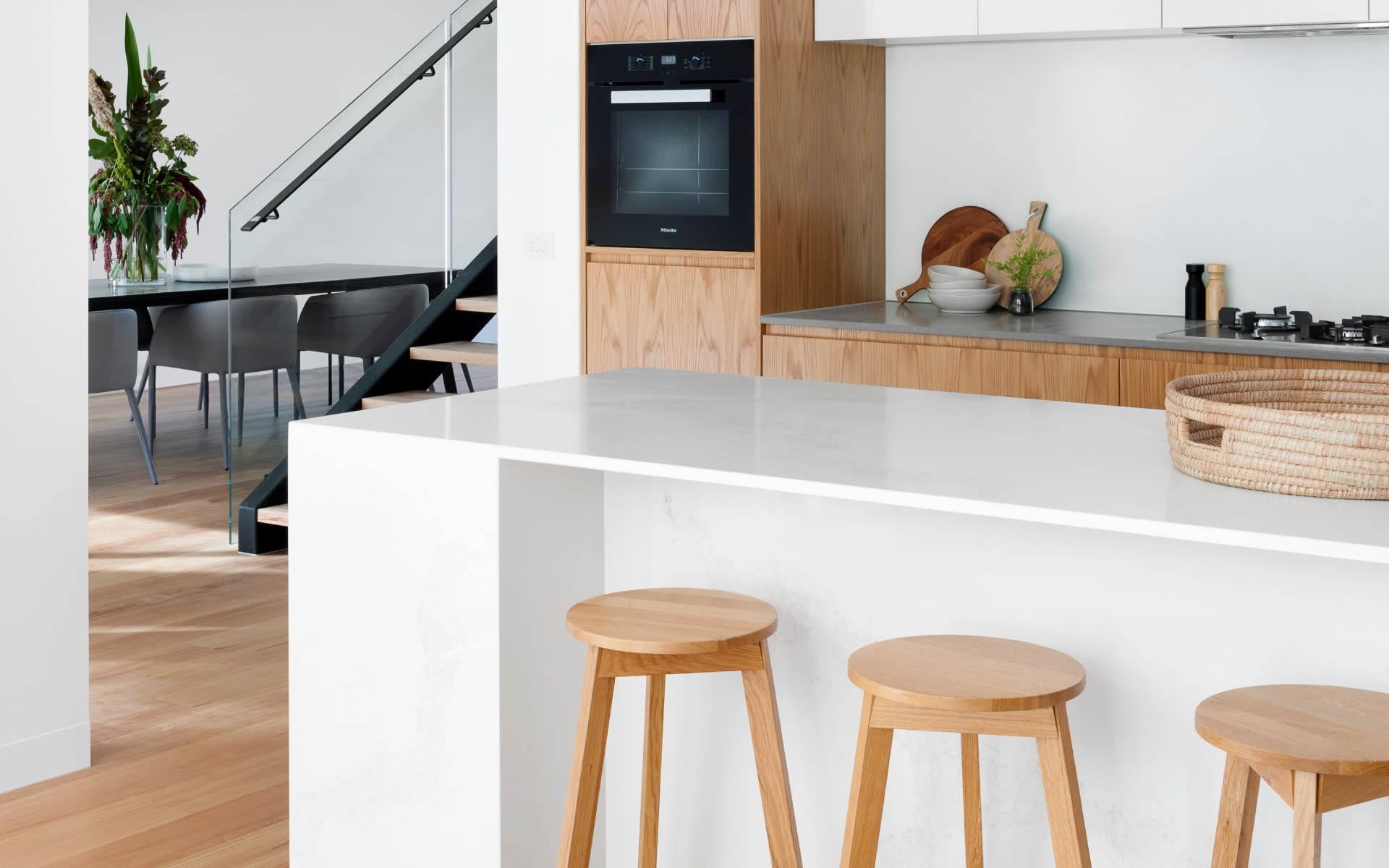When taking on a kitchen renovation, wouldn’t it be nice to decorate to your heart’s content without any regard for what will appeal to future buyers? You might be in love with the idea of a built-in rotisserie oven or a tile backsplash that depicts your favorite mythical creature. But are these specific features going to have universal appeal when it comes time to sell? Probably not.
The ideas of cost versus value and return on investment, or ROI, are always in the back of homeowners’ minds when making interior updates. So which kitchen improvement projects have the greatest chance of increasing the value of a home?
If you see a kitchen remodel in your future, check out the following advice from real estate and remodeling professionals on where to invest your cash—and which upgrades are worth skipping.
Good ROI: New cabinets
When walking into an outdated kitchen, the first thing you’re bound to notice are the cabinets. Cabinets that are in poor condition or made of cheap materials can be an eyesore. But updated kitchen cabinets deliver a consistently high ROI.
According to Remodeling Magazine’s most recent Cost vs. Value report, a minor kitchen remodel—which includes replacing cabinet fronts, drawer fronts, and hardware—will earn about a 70% ROI.
“Giving the cabinets a new look with hardware and paint can go a long way,” says Forrest McCall, a real estate investor based in Louisville, KY, and founder of the finance website Don’t Work Another Day.
If you’re especially handy, McCall says you can even go the DIY route and spend as little as $1,700 on refinishing cabinets—and add around $3,000 in value to the home.
Good ROI: Increasing countertop space
Providing more real estate in your kitchen for prep work is a boon for you and your home’s future asking price.
“Counterspace is key when it comes to a kitchen’s value,” McCall says. “Homebuyers are always on the lookout for more room on countertops, and adding additional space has improved the value of kitchens in homes I’ve sold.”
The average cost to install or replace countertops is about $4,000, according to HomeAdvisor. That number changes based on the size of your kitchen, the materials you choose, the cost of labor, and your location.
Homeowners can also add countertop space on the cheap through counter-extension cabinets, or with the addition of a stationary kitchen island. If you have the space for a stationary kitchen island, you have the ability to add extra seating and storage—two things guaranteed to add value.
A rolling kitchen cart is also a great option for a temporary additional surface since it can be tucked away when not in use.
Good ROI: Installing a skylight
Adding a skylight is an under-the-radar way to bring sunshine into your space and make the kitchen look larger. It also delivers an impressively high ROI.
“Skylights can take a small kitchen and instantly make it feel more open, especially in kitchens with pitched ceilings,” says Jeff Miller, owner of McHenry Roofing in Baltimore. “Skylights draw a potential homebuyer’s eyes upward so that they are focusing on the kitchen’s generous ceiling height and not on the size of the floor plan.”
Installing a skylight typically costs between $2,500 and $3,500 and can contribute an estimated $5,000 to $6,000 in value upon resale, according to Miller.
Good ROI: Upgrading the floor
Upgrading a dated kitchen floor will instantly increase your quality of life—and pay dividends in the future.
“I’ve seen how replacing existing linoleum with tile or hardwood can provide up to an 80% return on investment upon resale,”says Casanova Brooks, a Realtor® with eXp Realty.
Reflooring a typical kitchen and dining room with hardwood costs anywhere from $3,000 to $15,300; vinyl plank flooring ranges from $1,100 to $10,000. Many homeowners opt to refloor the kitchen and dining room at the same time, even if they are in separate spaces, so there is continuity throughout the house.
Bad ROI: Fancy countertop materials
Replacing ugly counters is a perennial kitchen goal for homeowners, and, as we stated above, this improvement project can pay off. But tread carefully. Fancy, expensive countertop materials like marble or granite might not hold their value.
“One of the worst decisions I made on a kitchen remodel was replacing a mediocre quartz countertop with a new marble countertop,” McCall says. “After spending just under $5,000 on countertops, I don’t think this added much value at all to the home.”
Bad ROI: Getting too personal
Unless you’re living in your forever home, you might want to think twice before installing a sparkly purple backsplash or any other kitchen feature that seems too personalized. The über-traditional family buying your house in a few years might well be horrified by your aesthetic idiosyncrasies.
“When renovating a kitchen to sell a home, it is important to choose a clean and neutral look,” says Kerry Sherin, a consumer advocate at New York’s Ownerly, a leading home valuation company. “Avoid overly personalized design choices as they can detract from the value of the home. Opt for simple choices such as neutral-colored synthetic stone or white porcelain tile.”
Bad ROI: Nonessential luxury items
Ultraluxe bells and whistles for your kitchen (like a nugget ice maker for Tiki cocktails) might be appealing, but they’re not likely to be practical down the line.
“Luxury and nonessential upgrades to a kitchen often do not provide high ROI or recoup any of the cost to buy and install them,” says Samantha Black, interior designer at California’s Freemodel. “These include luxury and currently popular new appliance offerings such as expensive, upgraded steam ovens, built-in coffee machines, trash compactors, warming drawers, and dishwasher drawers. Consider your local market and comparable listing if you are considering these amenities, and ask yourself if your market warrants these extra expenses.”






